Abstract
This study was designed to evaluate the zinc metabolism in adults of both sexes with thyroid disease. Plasma and erythrocyte zinc concentration and urinary zinc excretion were investigated. The mean concentration of plasma zinc in hypothyroid patients and in euthyroid patients, previously either hyperthyroid or hypothyroid, was lower than that of control subjects, whereas no statistically significant differences were observed in plasma zinc values between hyperthyroid patients and control subjects. The average erythrocyte zinc level in patients with thyroid disease was significantly lower than that in control subjects. Erythrocyte zinc concentration was significantly decreased in hyperthyroidism compared with hypothyroidism, or patients previously either hyperthyroid or hypothyroid but now euthyroid. Increased urinary zinc excretion in hyperthyroidism was noticed compared to euthyroid and hypothyroid patients and to control subjects. Increased urinary zinc concentrations may result from increased tissue catabolism such as muscle. The results of this study suggest that abnormal zinc metabolism occurs commonly in patients with thyroid disease.
Full text
PDF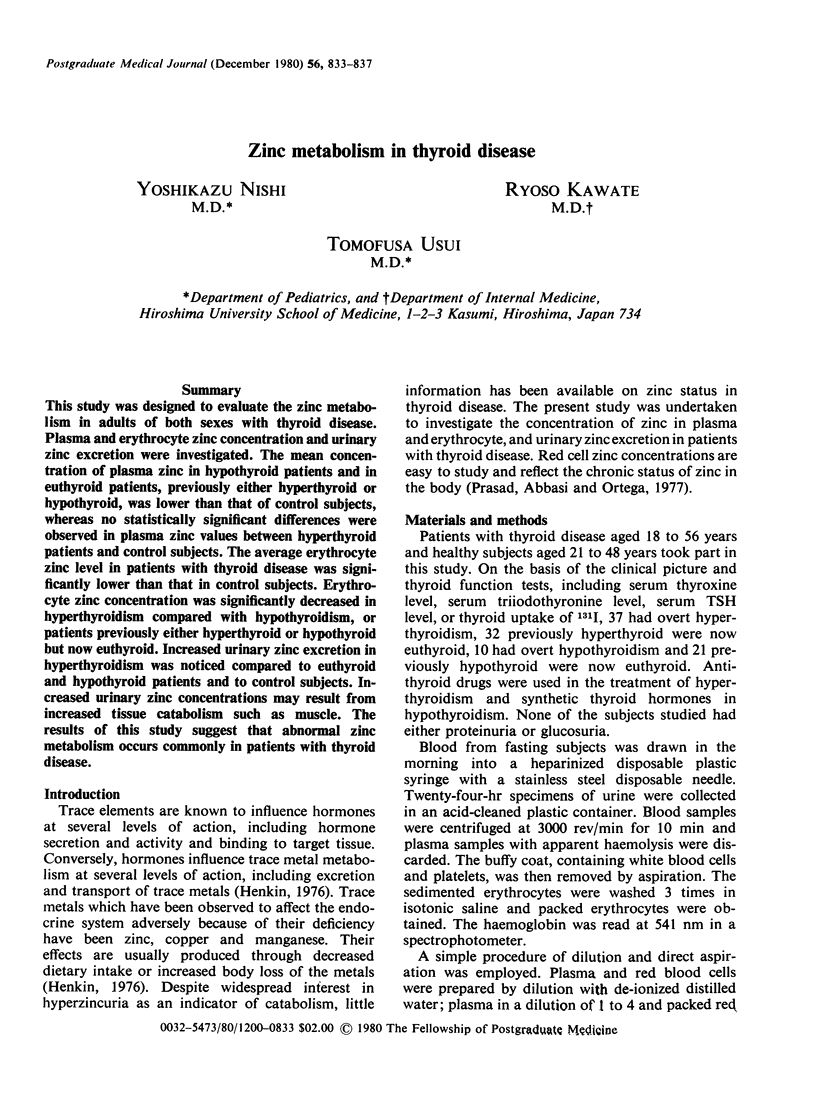
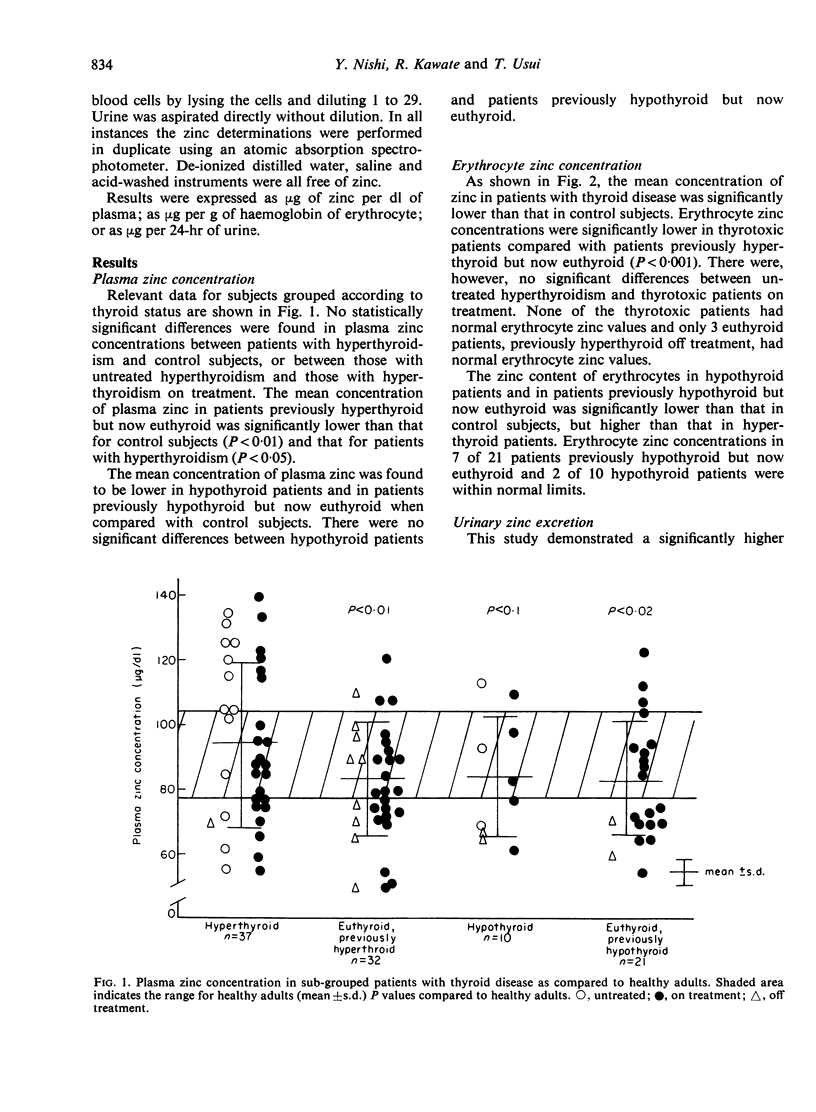
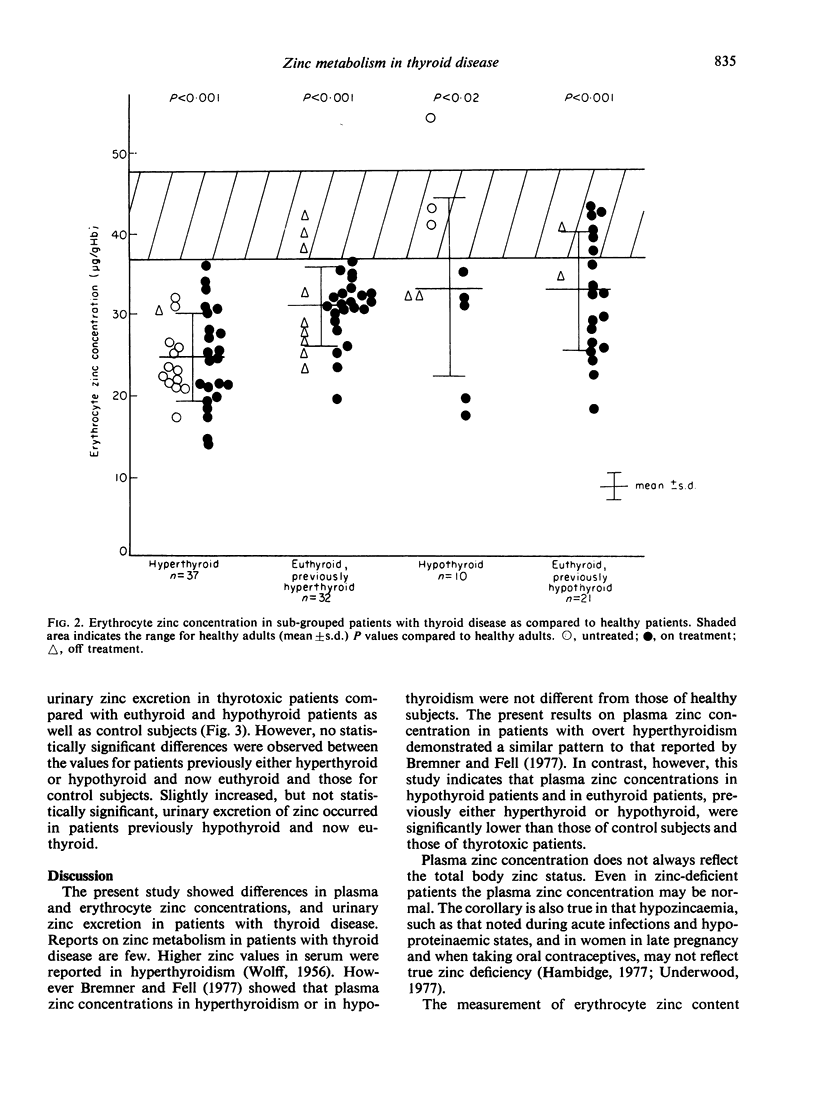
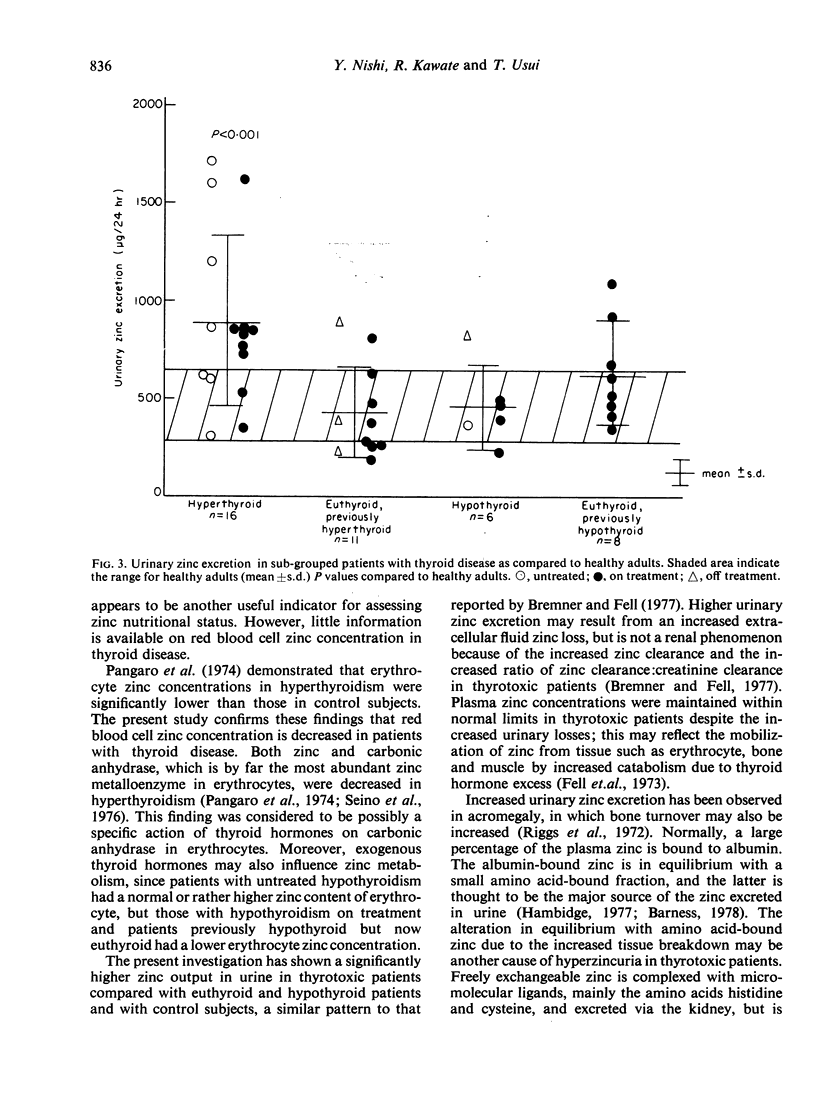
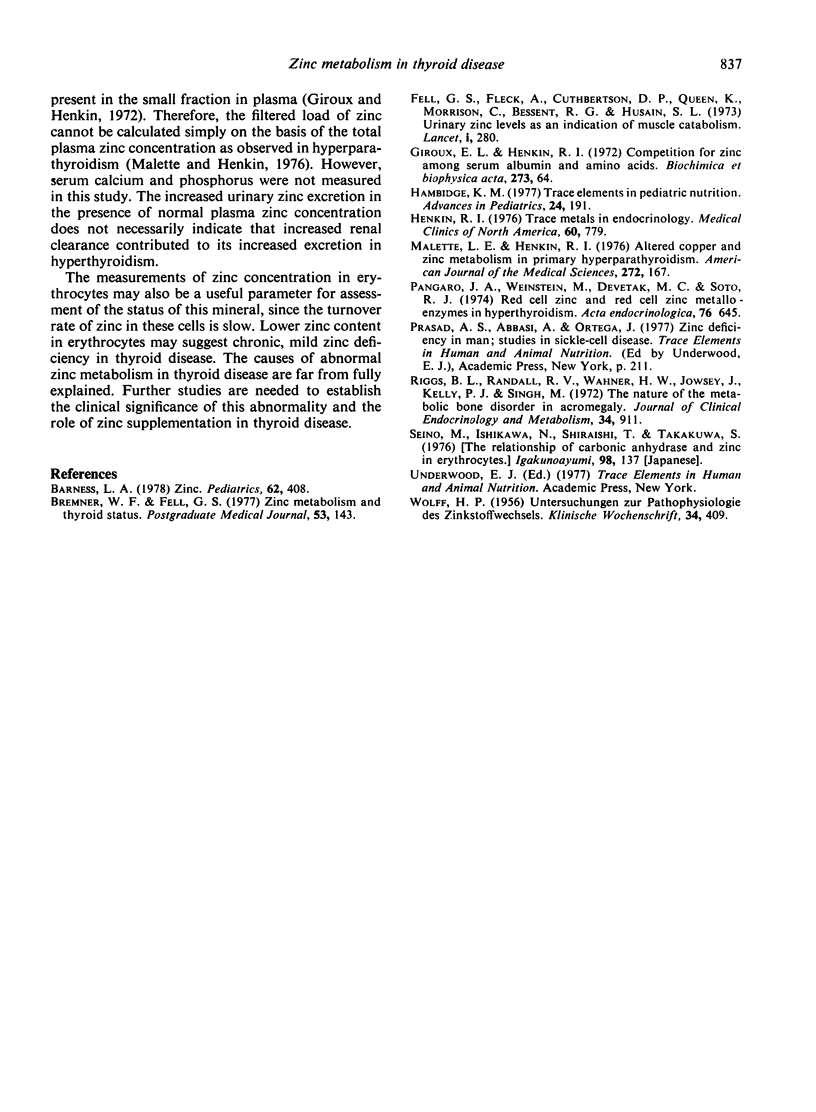
Selected References
These references are in PubMed. This may not be the complete list of references from this article.
- American Academy of Pediatrics. Committee on Nutrition. Zinc. Pediatrics. 1978 Sep;62(3):408–412. [PubMed] [Google Scholar]
- Bremner W. F., Fell G. S. Zinc metabolism and thyroid status. Postgrad Med J. 1977 Mar;53(617):143–145. doi: 10.1136/pgmj.53.617.143. [DOI] [PMC free article] [PubMed] [Google Scholar]
- Fell G. S., Fleck A., Cuthbertson D. P., Queen K., Morrison C., Bessent R. G., Husain S. L. Urinary zinc levels as an indication of muscle catabolism. Lancet. 1973 Feb 10;1(7798):280–282. doi: 10.1016/s0140-6736(73)91537-7. [DOI] [PubMed] [Google Scholar]
- Hambidge K. M. Trace elements in pediatric nutrition. Adv Pediatr. 1977;24:191–231. [PubMed] [Google Scholar]
- Henkin R. I. Trace metals in endocrinology. Med Clin North Am. 1976 Jul;60(4):779–797. doi: 10.1016/s0025-7125(16)31861-2. [DOI] [PubMed] [Google Scholar]
- Malette L. E., Henkin R. I. Altered copper and zinc metabolism in primary hyperparathyroidism. Am J Med Sci. 1976 Sep-Oct;272(2):167–174. doi: 10.1097/00000441-197609000-00006. [DOI] [PubMed] [Google Scholar]
- Pangaro J. A., Weinstein M., Devetak M. C., Soto R. J. Red cell zinc and red cell zinc metalloenzymes in hyperthyroidism. Acta Endocrinol (Copenh) 1974 Aug;76(4):645–650. doi: 10.1530/acta.0.0760645. [DOI] [PubMed] [Google Scholar]
- Riggs B. L., Randall R. V., Wahner H. W., Jowsey J., Kelly P. J., Singh M. The nature of the metabolic bone disorder in acromegaly. J Clin Endocrinol Metab. 1972 Jun;34(6):911–918. doi: 10.1210/jcem-34-6-911. [DOI] [PubMed] [Google Scholar]
- WOLFF H. P. Untersuchungen zur Pathophysiologie des Zinkstoffwechsels. Klin Wochenschr. 1956 Apr 15;34(15-16):409–418. doi: 10.1007/BF01468120. [DOI] [PubMed] [Google Scholar]


